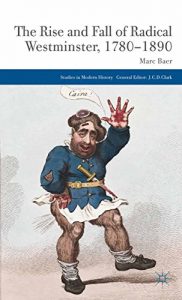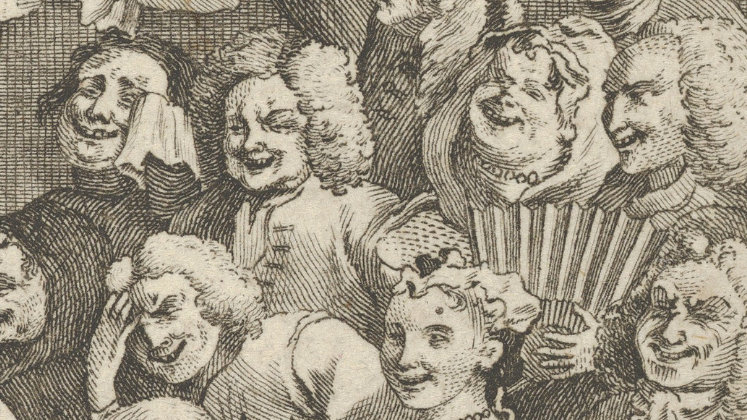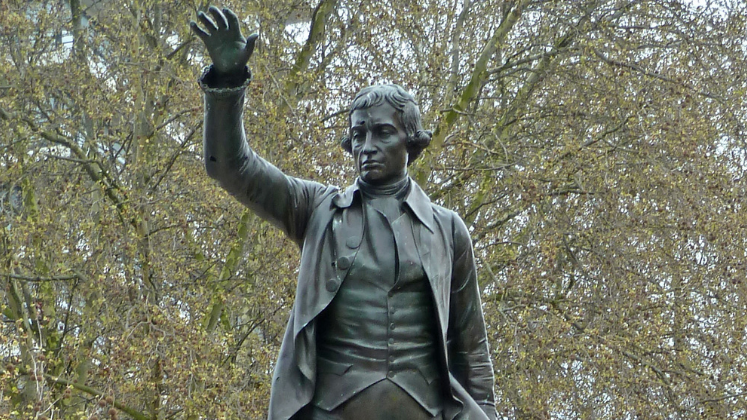 Using the most scrutinized political place in modern Britain, The Rise and Fall of Radical Westminster, 1780-1890 aims to expand our understanding of political culture and political institutions, taking in the history of satire, the place of political violence and the language of democracy. Jack Blumenau is impressed with Marc Baer‘s work, and recommends the book to political scientists and historians.
Using the most scrutinized political place in modern Britain, The Rise and Fall of Radical Westminster, 1780-1890 aims to expand our understanding of political culture and political institutions, taking in the history of satire, the place of political violence and the language of democracy. Jack Blumenau is impressed with Marc Baer‘s work, and recommends the book to political scientists and historians.
The Rise and Fall of Radical Westminster, 1780 – 1890. Marc Baer. Palgrave Macmillan. 2012.
 Find this book (affiliate link):
Find this book (affiliate link): ![]()
![]()
How can we understand the development of democracy in nineteenth-century Britain? At heart, historian Marc Baer’s thesis is for the primacy of political culture as an explanation for democratic change. Baer takes constitutionalist explanations of the democratization of late-Georgian Britain – an approach that “obscures more than it reveals” (p. 2) – and tries to persuade us that the political elite’s creation of a democratic institutional framework was antedated by the cultural development of democratic norms. As he expresses it, “political modernity in Britain came about through the democratization of political culture rather than legislation or class-based electoral behaviour.” (p. 2)
Although the argument of a reciprocal relationship between political culture and political institutions is not unique, Baer is particularly innovative in the methodology he employs to examine this relationship. The book investigates the meaning of political culture in the specific constituency of Westminster and does so by drawing on a rich variety of sources – from biography and memoir, to cartoon and caricature. Baer argues that it is only through the lens of the Westminster locale that we can understand the forces behind the rise and fall of radicalism in democratizing Britain.
The idea of reciprocity at the crux of Baer’s argument, is seen nowhere more clearly than in the relationship between political culture and political character. Chapter two considers this relationship in depth. It focuses on four key Westminster politicians – Charles James Fox, Sir Frances Burdett, John Stuart Mill, and W.H. Smith – and how they helped to shape the evolving radical and reformist culture of Westminster, but also on how they were, in turn, shaped by the constituency they represented. The fixation on location allows for a revisionist reading of these famous figures, as it allows Baer to consider how arguments of structure and agency are often fundamentally interlinked. As he puts it, “beginning with place produces a very different narrative than starting with subject, for it draws us into one of the most important concerns of political history – whether politicians or the people were the primary shapers of political culture.” (p. 43)
The answer offered to this ‘most important concern’ is that the careers of these public men were both shaped by, and helped to shape, the political culture of Westminster. For example, Baer convinces us that Fox not only helped to stimulate the emergence of radicalism in Westminster, but was also forced to take action on parliamentary reform thanks to public pressure via his ‘Westminster connection’. Likewise, a key way in which these reforming men were influenced by their reformist borough was through their use of language – and particularly language that emphasised their independence from government. Thus, although Smith is known to have vacillated between Liberal and Conservative sympathies, Baer argues that this was typical of the Westminster politician, and that “this ‘Westminster language’ was recognizable…” (p. 60). Overall, then, in examining the lives of these men through the filter of their locale, Baer does not discount the importance of their reforming actions, but shows that their political demeanours were in large part shaped by the culture that spawned them.

Photo by Charlie Marusiak on Unsplash
A key step in the transition to democracy in late-Georgian Britain was the decline of violence that hitherto had accompanied elections. In chapter four, it is suggested that societal changes in political practice cannot be understood as stemming solely from the decisions of politicians. Contrary to much of the constitutionalist literature, Baer argues that the decline of electoral violence was a cultural and social phenomenon, and that successive legal changes were less important in explaining the reduction in violence. His thick description of interacting election violence ‘stress points’ in this chapter is particularly enlightening and leads the conclusion that while the Parliamentary and Municipal Elections Act of 1872 helped to reduce violence by making voting a secret, rather than a public, act, the decline of disorder defies mono-causal explanation. Thus, again, by focussing on the Westminster locale, Baer is able to draw attention to the relationships between a multitude of different factors that could be seen to foster violence, but which might be missed in a national level study.
One of the most enlightening (and entertaining) expressions of Bear’s argument comes in chapter eight, where he examines the role that caricature and cartoon played in changing the political culture of Westminster. Baer suggests that the narrative of political images sometimes preceded changes in political reality, and sometimes responded to such changes. He draws a line from the elitist, antidemocratic, and somewhat brutal caricatures of the Georgian period to a visual argument of the Victorian era which showed a more inclusive brand of politics, incorporating both the lower classes and women in its compositions.
The key question, of course, is whether these prints, and the people who made them, reflected or shaped public opinion and thus whether they responded to or instigated political change. Baer provides a compelling case that this print culture often had instrumental effects. While acknowledging that there is a difference between seeing caricatures and cartoons and being influenced by them, he argues that artists were able to draw the attention of an increasingly broad audience to aspects of political character and values that had previously not been so clear. For example, in 1847, Charles Cochrane suffered a torrent of satirical abuse from the newly formed Punch magazine, which, argues Baer, led directly to his defeat as a Westminster candidate. Likewise, John Stuart Mill was often portrayed in a way to emphasise his unorthodox beliefs. As Baer puts it, “Odd ideas were linked to an odd looking man.” (P. 229)
The power of satire, and hence of the political culture in which it is embedded, transcends the historical period under study in this book. For example, until its cancelation in 1996, the role played by ITV’s Spitting Image was similar to that of political cartoonists and caricaturists in Baer’s description of late Georgian Britain. The damage done to politicians such as Mill and Cochrane would be recognized by Liberal leader David Steel, who was depicted by the Spitting Image team as being both literally and metaphorically ‘in the pocket’ of SDP leader David Owen. Steel has often attributed his political difficulties to that satirical portrayal. The effects of political culture on political change thus continue beyond the arguments made in Baer’s book, and only serve to underline the validity of both his general argument, as well as the methods he employs to pursue his study.
As a political scientist, this reviewer has a natural propensity to look for clearly defined and operationalized independent and dependent variables. Clear and uncluttered causal links between phenomena are the nirvana of political science study, and the endogeneity of explanatory variables is often considered as a fundamental weakness. However, Baer’s book reminds us that complexity is not a vice, and that the idea of reciprocity between phenomena can be key to understanding social processes. At no point does Baer suggest that constitutionalist innovations were unimportant to the democratization of late-Georgian Britain, only that such innovations did not occur in a cultural vacuum. His thesis suggests that while political culture will adapt to constitutional engineering, it also forms a driving force behind institutional evolution. The story of the rise and fall of radical Westminster allows us to observe this argument in microscopic, and ultimately convincing, detail.
Note: This review gives the views of the author, and not the position of the LSE Review of Books blog, or of the London School of Economics. The LSE RB blog may receive a small commission if you choose to make a purchase through the above Amazon affiliate link. This is entirely independent of the coverage of the book on LSE Review of Books.







